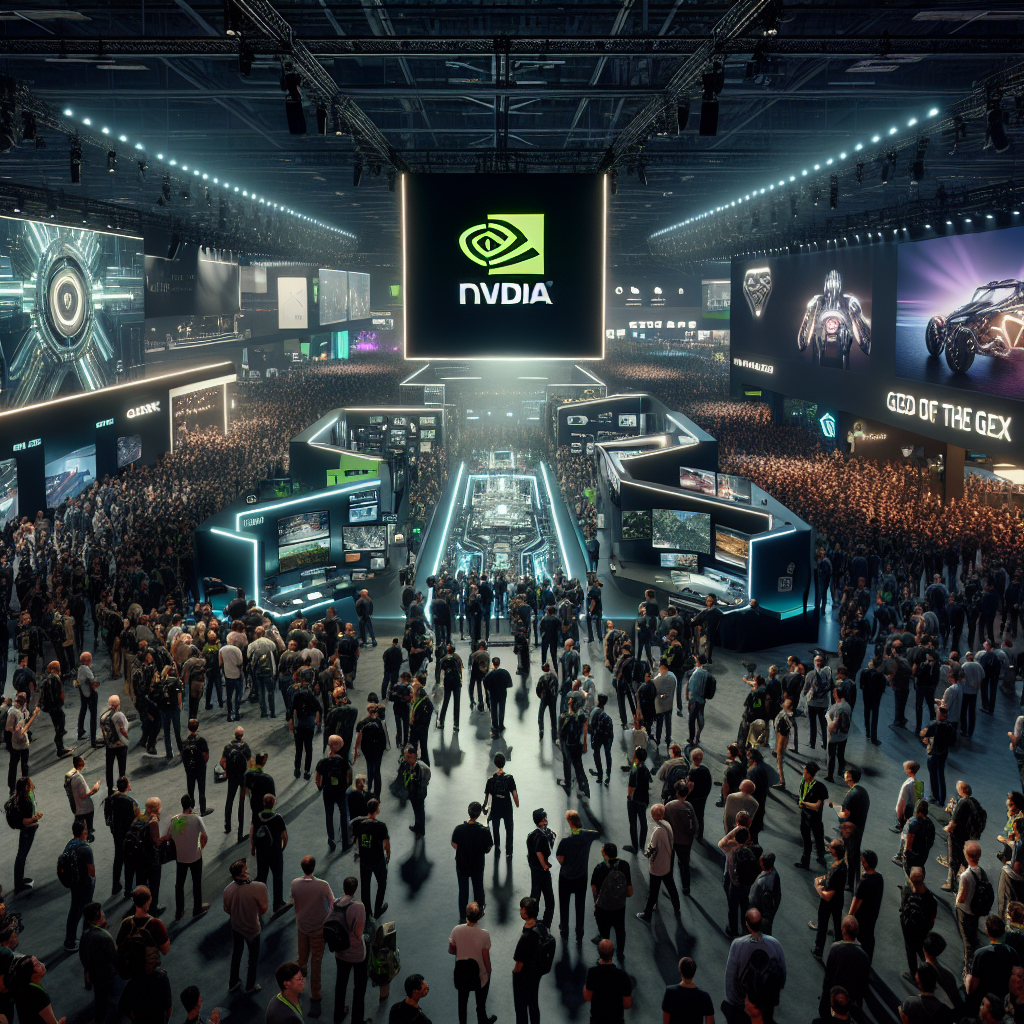Nvidia's GTC Extravaganza: A Dive into the Future of AI and Computing
In a world where technology is rapidly evolving, Nvidia’s recent GTC event stands as a beacon of progress, signaling the dawn of a new era in computing and artificial intelligence (AI). Here’s a deep dive into the marvels unveiled by Jensen Huang, the visionary CEO of Nvidia, and the electrifying atmosphere that could very well mark the beginning of the next Industrial Revolution. Amid the whirlwind of innovations, we'll also touch on other AI developments that are shaping the landscape of technology and business.
The Blackwell GPUs: Powerhouses of AI
At the heart of GTC's revelations lie the Blackwell GPUs, a breakthrough with the promise of reshaping AI's capabilities. Imagine processors capable of accelerating the pace of advancement in AI, making today’s marvels tomorrow’s footnotes. These aren't just any chips; they're the muscled workhorses behind the surge in AI's potential, eagerly adopted by tech giants like Google, Microsoft, and an array of burgeoning startups.
The energy at the event was palpable, a clear testament to the industry's hunger for more power, more speed, and less energy consumption. The Blackwell GPU isn't just an incremental upgrade; it's a quantum leap that's set to slash the time and cost associated with training increasingly complex AI models. This means not only a boost for AI research but also more ecological and cost-efficient computing solutions at our fingertips.
AI Integration Simplified: Nvidia’s Nim
Amid the hardware fanfare, Nvidia also introduced Nim, a tool poised to revolutionize how businesses incorporate AI into their operations. Nim streamlines the deployment of AI, offering a plug-and-play solution that is as game-changing as it is user-friendly. By democratizing access to state-of-the-art AI, Nvidia is not just selling chips; it’s selling the future of business innovation.
For more insights into Nvidia's strategic direction and its impact on AI:
The Digital Twin Paradigm and Robotics
Another intriguing concept championed by Jensen Huang is that of digital twins. The idea is as audacious as it is futuristic: simulate everything from products to entire warehouses in the digital realm before they manifest physically. Critics may be skeptical about replicating the real world's complexity in a virtual environment, particularly for nuanced fields like healthcare. Yet, Nvidia’s assertion is clear: AI will bridge this gap, leveraging its ability to generalize and solve unforeseen challenges.
Equally fascinating is Nvidia’s deep dive into robotics. Collaborations with a myriad of companies aim to bring humanoid robots closer to practical reality. This isn't about one-off demonstrations but about fundamentally changing how we interact with machines and, indeed, the very fabric of daily life.
Open Source AI: Grok and Beyond
In an industry often criticized for its guarded secrets, the unveiling of Grok as an open-source marvel is a breath of fresh air. Though its sheer size and the computational heft required may limit its accessibility, the spirit of the release is commendable. It represents a step towards a more collaborative, transparent AI development landscape, where innovations are shared rather than hoarded.
The Bigger AI Picture: From Apple to Stability AI
As Nvidia pushes the boundaries of AI hardware, the software side of AI is equally abuzz with developments. Apple’s rumored forays into employing large language models for Siri signal mainstream tech giants’ growing interest in AI. Meanwhile, Stability AI’s release of stable video 3D showcases the expanding capabilities of generative AI, even if it’s in its nascent stages.
The OpenAI and Microsoft Alliance
Amidst these developments, OpenAI's partnership with Microsoft stands out as particularly significant. This collaboration, bolstered by the hiring of Mustafa Suleyman as CEO of Microsoft AI, underlines a concerted push towards integrating AI into consumer products and services. What's more, OpenAI's tease of multiple releases before unveiling GPT-5 hints at a strategic roadmap that's as broad as it is ambitious.
For a glimpse into the evolving AI landscape:
Reflections and Projections
As the dust settles on Nvidia's GTC event and the wider AI developments of the season, a few things become clear. First, the pace of technological advancement is not slowing; if anything, it's accelerating. Second, the integration of AI into every facet of technology and business is inevitable, driven by the dual engines of hardware improvements and software innovations. Finally, the community of creators, developers, and visionaries in AI is more vibrant and collaborative than ever.
As we look to the future, it’s evident that we’re on the brink of a transformative era. The innovations spearheaded by Nvidia, alongside the myriad developments across the AI ecosystem, promise not just new products and services but new ways of living and working. The potential for AI to serve as a force for good, to streamline our lives, enhance our capabilities, and solve complex global challenges, has never been more tangible.
In the end, events like GTC aren't merely showcases of technology. They're glimpses into the future, invitations to dream bigger, and catalysts for change. As we ponder the possibilities, the question isn't just about what the next big breakthrough will be, but how we'll harness these advancements to build a better world. In that journey, the spirit of innovation exemplified by Nvidia's GTC event is a beacon of light, guiding us toward a future that’s as exciting as it is uncertain.
Related News
- The Chess Game of AI Innovations: A Deep Dive into Recent Developments
- Unpacking the AI Revolution: A Deep Dive into Recent Developments
- Unveiling the Power of AI and Gaming: A Dive into NVIDIA's RTX 4080 Super Giveaway and GTC Event
- Exploring the Frontier: A Deep Dive into the Latest AI Developments and Their Implications
- The Dawn of GPT-5 and Beyond: A Deep Dive into the Future of AI
